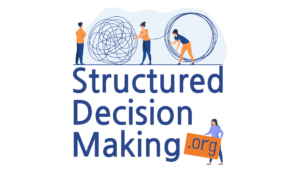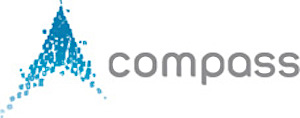The Difference Between Objectives and Targets
Objectives define an endpoint of concern and the direction of change that is preferred – all else being equal, more is better than less, or vice versa. In contrast to targets or goals, objectives as used in SDM do not define specific quantitative thresholds that must be achieved. They are not analogous to regulatory standards for water or air quality that establish fixed targets, (e.g., BC’s “provincial water quality objectives”).
In a typical target-setting process, targets are established first (e.g., reduce emissions by 50%, increase salmon habitat by 50%). Yet at the time of setting the target, little or nothing is known about how the target will be achieved (the alternatives), or what it will cost, either financially or with respect to other objectives (the trade-offs).
Target-setting is suitable when:
a) there exists a clear threshold of effects – i.e., below some threshold we are safe and above it we are not; or
b) it has been shown that there exist many low cost, no-regrets actions to achieve the target.
However, there are relatively few situations where one of these conditions holds. In most cases, biological or human health effects lie on a continuum, true thresholds either don’t exist or are unknown, and low-cost no regrets actions have already been undertaken.
In the SDM process, the implications of different targets are explored through evaluation criteria and alternatives, so that the trade-offs are exposed before a target is adopted.
Suppose for example, that a decision process is underway for establishing industrial discharge permits in a watershed. For one contaminant of concern, suppose that there exists a widely cited “no observed adverse effects level” or NOAEL, and that this level is currently regularly exceeded in the watershed. An SDM process in this case could establish an evaluation criterion for the “number of exceedences per year of the NOAEL”. The NOAEL is not set as a target that must be achieved at all cost, but it is recognized as a significant benchmark, and so it is useful to report the expected consequences of the alternatives with direct reference to this benchmark. The SDM process can then go on to test the implications of different targets through alternatives. One alternative may be designed to allow zero exceedences, another up to five per year, and another up to twenty per year. One can imagine that these alternatives would involve different permit levels or technology standards for various dischargers in the watershed, and that each alternative would have different implementation costs and possibly different performance with respect to other contaminants and hence differences in other environmental effects. The consequence table should expose these trade-offs. Decision makers can then select the alternative with the most desirable balance across the objectives, which may or may not be one that allows occasional exceedence of the NOAEL.
Key Ideas
- SDM Objectives do not define specific quantitative thresholds
- Objectives do define an end of concern and a preferred direction of change, all else being equal.
- Targets are useful when there is a clear threshold of effects and there are low-cost, no-regrets actions to achieve the target

